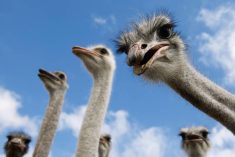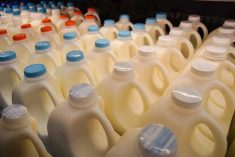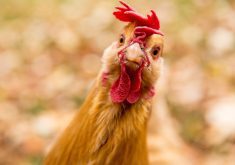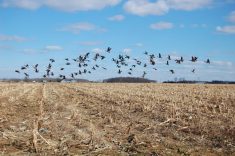RATIONS | Did the U.S. practice of feeding chicken litter contribute to the bovine flu outbreak?
Commonly known as bird flu, avian influenza A has crossed the boundaries from the chicken barn to the dairy farm and from there to a human in the United States.
This is a serious virus that has infected poultry in 50 American states since 2022. The person infected in April is the second U.S. human case since then. The person was working on a dairy farm where cattle tested positive for AI. The first person to contract AI in 2022 was working with an infected flock.
In poultry, this virus requires full depopulation once diagnosed. Cattle do not normally die from AI, although they can develop secondary infections from respiratory complications and their productive capabilities are affected.
Read Also

Ag Days Gives Back 2026 focuses on fire response
Manitoba Ag Days charitable program, Ag Days Gives Back, returns for 2026 with a new wave of rural community support in Manitoba and southeast Saskatchewan
The World Health Organization has posted that over the last 11 years, more than 400 people have died from AI, which is about 50 per cent of the total infections reported in humans globally. The triple threat in the current situation is unusual because the virus moved through three species.
It is not new for a zoonotic disease to cross from one species to another. For example, a dead bird from the wild with avian influenza can infect the resident dogs or cats.
The American Association of Bovine Practitioners has renamed the virus in cattle to Bovine Influenza A Virus. A recent U.S. survey found around 20 per cent of samples contained “particles” of the virus, which suggests the outbreak is more widespread in dairy cattle than previously thought. Further testing using egg inoculation tests, considered most accurate, have shown pasteurization kills the virus.
The trade of dairy cattle between states and territories and some countries has halted and Canada is monitoring the situation. The cause of the pathogenic parade has not been clearly identified. Were there dead birds, either domestic or wild, on the infected dairy farm that also infected dogs and cats and then a human?
Were the cattle fed chicken litter from infected barns? Speculation is currently focused on the latter. In the United States it is legal and common to feed chicken litter to cattle. It is not recommended for lactating cows and there is a withdrawal period in fed cattle to ensure antimicrobials from the litter do not appear in carcasses.
There are no forbidding regulations in any other class of bovine. Poultry litter consists of the manure, bedding and any other shedding found on the barn floor. In the United States, this can be used as feed that is composted, ensiled, made into pellets, sprayed with acid to lower the pH or served ‘as is’ and mixed with or top dressed on the ration.
This is not allowed in Canada. Poultry litter cannot be fed to cattle. With the use of antimicrobials in the average American large production barn and the high incidence of infection in the past two years, it would seem sensible to discontinue or ban the use of poultry litter in cattle feed.
Then traces of antimicrobials and growth promotants, infected feces and body parts would be kept out of meat and milk and would reduce the risk of disease transmission.
At the heart of this is the question of why. It is 2024 and we cannot say we have come a long way when science and research are trumped by an anachronistic practice of feeding manure. With all the advances in feed science and a strong veterinary community, there are other ways of knowing and doing. One drives the other.
There are about 9.5 billion chickens slaughtered in the United States every year that each produce 100 grams of manure each day. That’s a lot of litter. The protein content in the floor scraps is used in the diets of some of the 89 million head of American cattle.
The poultry, milk and beef production, of which dairy cattle are part, feed the population of the United States and their trading partners, including Canada. Therein lies the concern.
Of the beef imported into Canada, 60 per cent comes from the U.S., where feeding protocols are not reciprocal. American milk is now sold in Canada, although it is unlikely that lactating cows are fed poultry litter because this is not recommended. But many herds in different states are now reporting avian influenza, and the common denominator has yet to be proven.
This occurs at a time when U.S. officials have identified a lack of readiness and compliance for the Food Safety Modernization Act and during the ongoing federal antitrust investigation for anticompetitive conduct, bid rigging and price fixing in the broiler chicken industry.
In watching American systems fail, we are reminded how quickly the practice in one industry has potential to damage another and threaten human health.
Though Canada’s food production system is one of the safest in the world, we must remain diligent in improving it. Every day we must endeavour to protect our farm workers, serve our consumers clean and safe food, ensure we have the latest in science and innovation to back up our practices and always put animal well-being first — honouring them in every aspect of their lives for the food they provide.















